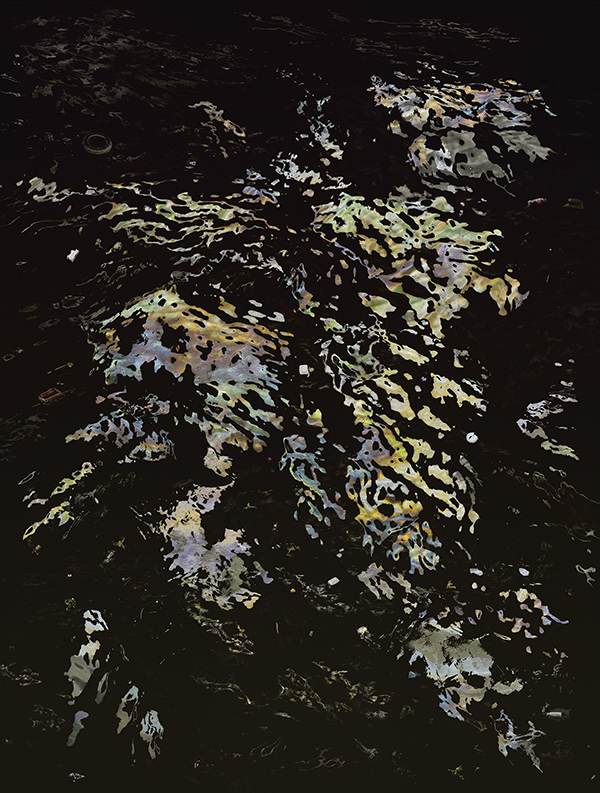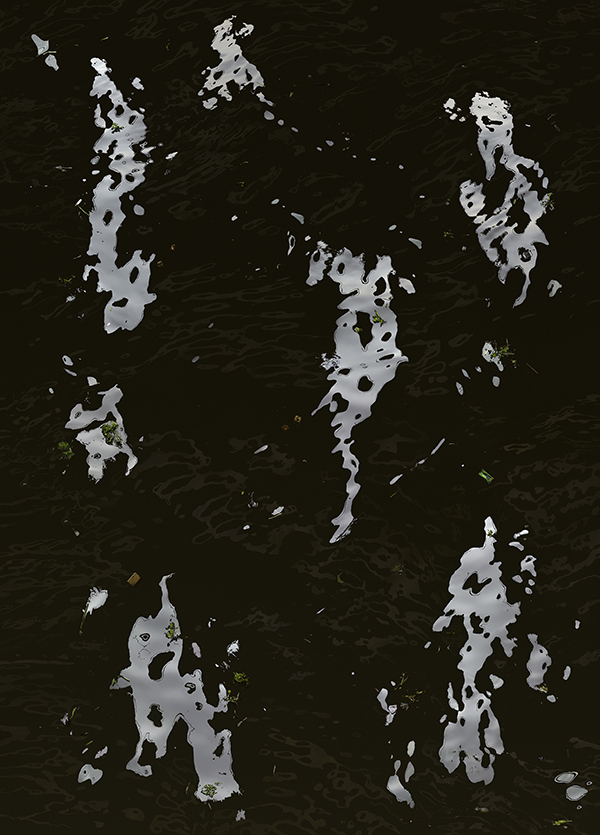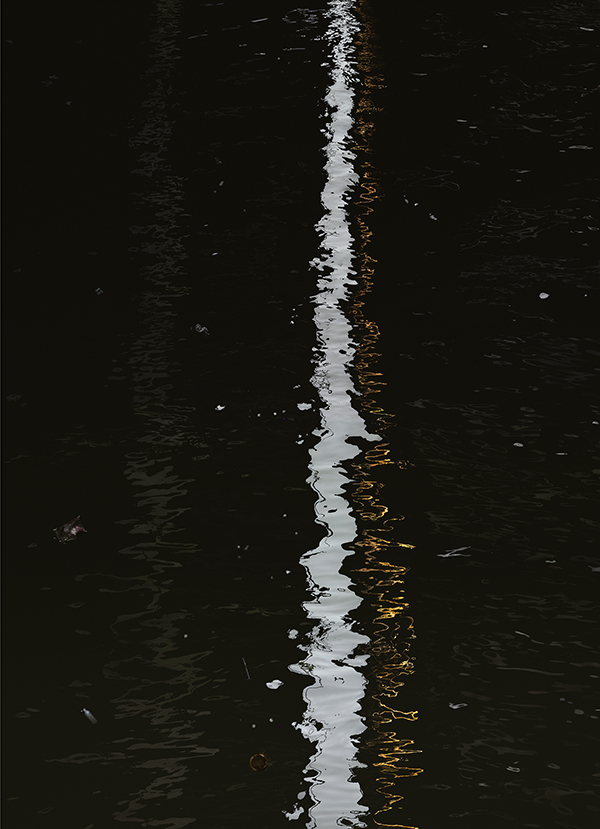PHOTO:Andreas Gursky-Bangkok

The work of Andreas Gursky is recognized for his enormous architecture and landscape color photographs, often using an aerial vantage point and by the tension between the clarity and formal nature of his photographs. Each overall composition is a technical and visual masterpiece that has long inscribed itself on the collective visual memory of the art world.
By Dimitris Lempesis
Photo: Gagosian Gallery Archive
Andreas Gursy in his solo exhibition “Bangokk”, at the Gagosian Gallery in Rome, presents works from his “Bangkok” series (2011), as well as the monumental “Ocean VI” (2010). In spring of 2011, Gursky visited Bangkok and observed the Chao Phraya that flows through the city and empties into the Gulf of Thailand. Andreas Gursky’s “Bangkok” series depicts the dark, moving waters of the river, whose shimmering surface possesses the qualities of abstract painting. Indeed these photos are reminiscent of the work of modernist abstractionists such as Hans Arp, but they also echo the patterns of military camouflage. Seductively beautiful at first glance, it is only slowly that the detritus of civilization floating on the surface of the river becomes recognizable, the evidence of an ominous, threatening reality moving across colorful reflections. Gursky thus alludes to the ecological problems that jeopardize Bangkok, which, shortly after these images were made, contributed to the widespread flooding that devastated many areas in Thailand. Also on the exhibition is on view “Ocean VI” (2010) from his six-part series “Ocean I-VI” (2009-10). The series goes back to a spontaneous visual experience. As the artist relates, while flying one night from Dubai to Melbourne he stared for some time at the flight monitor: the Horn of Africa to the far left, a tip of Australia to the far right – and there in between the blue void. Then all of a sudden he saw the graphic representation on the monitor as a picture. The path from diagram to large-scale photographic work proved to be very involved. Gursky used high-definition satellite photographs which he augmented from various picture sources on the Internet. The satellite photos are restricted however to exposures of sharply contoured land masses. Consequently the transitional zones between land and water as well as the oceans themselves, had to be generated completely by artificial means. Given that they make up by far the largest part of the works, this resulted in a gigantic project. Dominated by the Atlantic, with Caribbean islands and parts of the North and South American coastlines visible in the outermost edges, “Ocean VI” (2010) underscores the vulnerability of the Earth’s continents as ocean levels rise at an increasing pace. Gursky’s photographs thus touch a topical nerve in contemporary life, symbolizing environmental threats on both a local and a global scale.
Info: Gagosian Gallery, Via Francesco Crispi 16, Rome, Duration: 14/12/17-3/3/18, Days & Hours: Tue-Sat 10:30-19:00, www.gagosian.com



